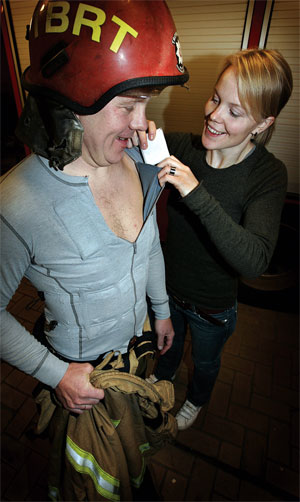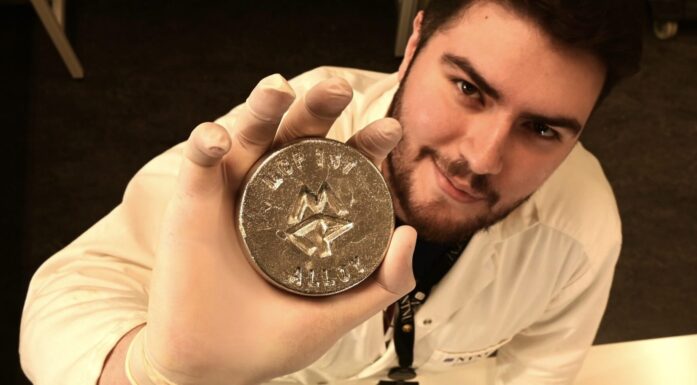Cool undershirts
This is the clothing that fire-fighters have been waiting for: an intelligent undershirt that cools overheated bodies
“These shirts are a valuable step in the right direction. Clothing of this sort will lengthen the time that smoke-divers can keep on working, perhaps to as much as twice as long”, says evacuation and training leader Stein Yttereng of Trondheim Fire and Rescue Service.
The special undershirt was developed as part of the work by SINTEF and NTNU on “Smartwear”, or intelligent clothing. Pockets on the inside of the vest hold plastic sachets of Glauber’s salt (sodium sulphate decahydrate), a powder that melts when the wearer’s skin temperature reaches 28 OC. This will provide cooling relief for sweating smoke-divers, since the change of phase requires heat, which the powder takes from the body.
“I was less exhausted afterwards than usual”, said one smoke-diver who tried out the first prototype of the vest during a training session.
FIREWOMAN AND STUDENT
The story behind this unusual item of clothing starts with a meeting between an MSc student at NTNU and her supervisor from SINTEF. Twenty-five year-old Ingrid Wist Langmoen had matriculated at NTNU with a rather unusual professional background for a woman: she had spent four summers as a vacation substitute in the emergency section of the fire brigade in her home town of Hamar.
FROM FIGHTER PILOTS TO FIRE-FIGHTERS
For her MSc thesis on “Product development and production”, Ingrid chose the topic of “Equipment and clothing for the fire-fighters of the future”. Industrial designer Jarl Reitan of SINTEF Health Research became her supervisor. Several of his colleagues had been working on clothing for people whose jobs exposed them to heat, such as fighter pilots. He advised Ingrid to pursue smartwear with built-in cooling ability.
On the Internet, Ingrid found that smart cooling vests for fire-fighters were already commercially available, and a Swedish manufacturer sent her vests that incorporated Glauber’s salt. In SINTEF’s climate chamber, she was able to demonstrate that such vests did have the ability to cool the body, but she also realised that they were too thick to allow perspiration to pass through them, with the result that they became wet and unpleasant to wear.
Ingrid therefore found a thinner type of garment, and experimented until she found the most effective locations for the cooling pockets. As part of her MSc dissertation, she interviewed fire-fighters in order to find out what they wanted from their underclothing. Stein Yttereng of Trondheim Fire and Rescue Service gave her the idea of using an undershirt rather than a vest.
WANTS SENSORS IN CLOTHING
Ingrid hopes that her solution will be commercialised in the future. So does Yttereng, who emphasises the cooling is extremely useful for a smoke-diver precisely because it is “high body temperature leading to fluid loss that does in for us”.
“We would also like to have sensors in clothing to monitor heart-rates and the ambient temperature”, says the experienced fire-fighter.
By Svein Tønseth





